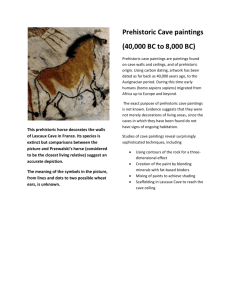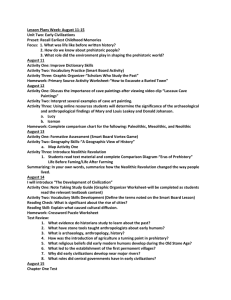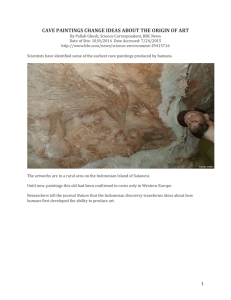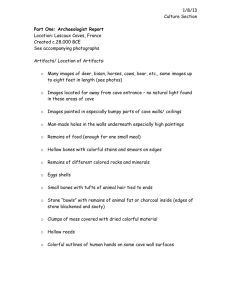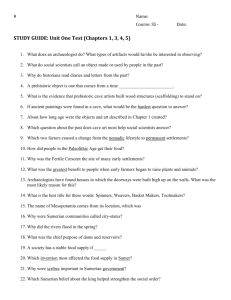8.2.15.homework.soci
advertisement
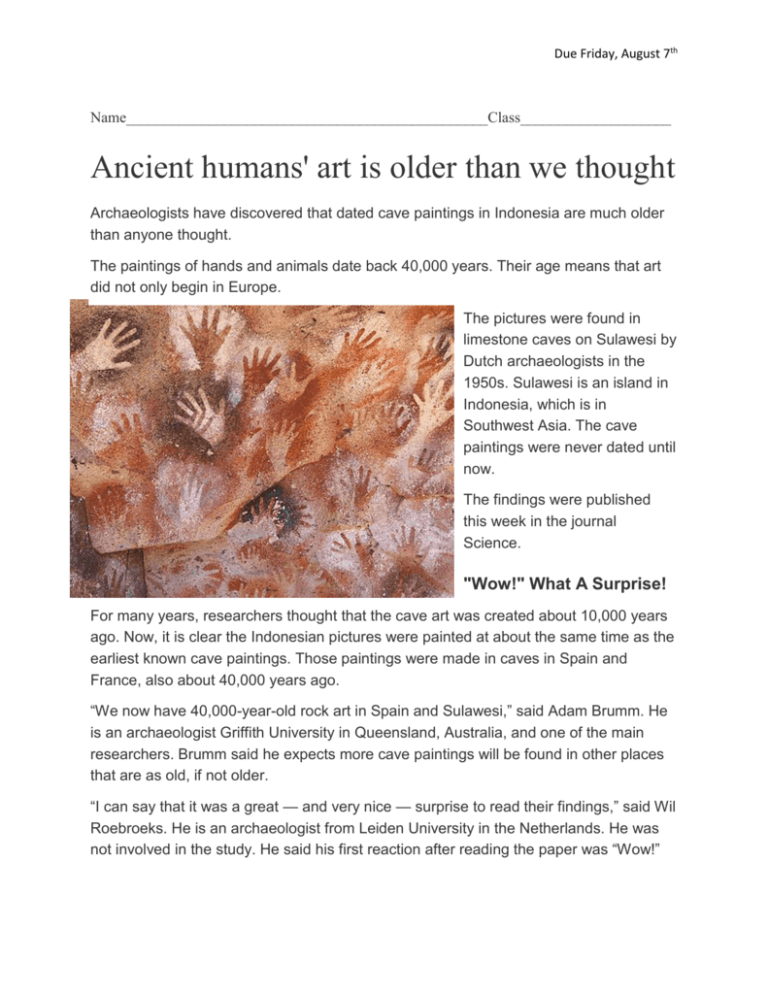
Due Friday, August 7th Name________________________________________________Class____________________ Ancient humans' art is older than we thought Archaeologists have discovered that dated cave paintings in Indonesia are much older than anyone thought. The paintings of hands and animals date back 40,000 years. Their age means that art did not only begin in Europe. The pictures were found in limestone caves on Sulawesi by Dutch archaeologists in the 1950s. Sulawesi is an island in Indonesia, which is in Southwest Asia. The cave paintings were never dated until now. The findings were published this week in the journal Science. "Wow!" What A Surprise! For many years, researchers thought that the cave art was created about 10,000 years ago. Now, it is clear the Indonesian pictures were painted at about the same time as the earliest known cave paintings. Those paintings were made in caves in Spain and France, also about 40,000 years ago. “We now have 40,000-year-old rock art in Spain and Sulawesi,” said Adam Brumm. He is an archaeologist Griffith University in Queensland, Australia, and one of the main researchers. Brumm said he expects more cave paintings will be found in other places that are as old, if not older. “I can say that it was a great — and very nice — surprise to read their findings,” said Wil Roebroeks. He is an archaeologist from Leiden University in the Netherlands. He was not involved in the study. He said his first reaction after reading the paper was “Wow!” Due Friday, August 7th The researchers started on the project about three years ago. At the time, they had no idea of the age of the rock art. They just wanted to know the date for sure. To do that, the team relied on a relatively new way of dating called U-series dating. The method was also used to date the rock art in Western Europe. Careful Steps To Test The Art First they looked for painting that had small, white growths covering them, which looked like little cauliflowers. Eventually, they found 14 of the white growths. Twelve of them were covering the hand outlines and two were on the drawings of animals. The white growths are known as cave popcorn. They are made of minerals left behind by water running down the walls of a cave. Scientists are able to test the minerals, which acts kind of like a geological clock, said Maxime Aubert. He is with the University of Wollongong in Australia. He is an expert on dating cave paintings. Using a cutting tool with a diamond blade, Aubert cut into the cave popcorn. He removed small samples that included some of the paint color. The paint samples would be at least as old as the earliest layer of cave popcorn. The researchers found that one of the hand outlines was made at least 39,900 years ago. A painting of an animal called a pig deer was at least 35,400 years old. Ancient Humans Keep Surprising Us In Europe, the oldest known cave painting was of a red disk found in a cave in El Castillo, Spain. It was painted at least 40,800 years ago. The earliest painting of an animal, a rhinoceros, was found in the Chauvet Cave in France. It dates back 38,827 years. Archaeologists have two theories about how humans made art at the same time on different continents. Each group may have come up with the idea of art at about the same time, although they did not know about each other. There is a more interesting theory, though. Art may have already been invented by an even earlier people. They brought their art with them as they traveled to new lands. For many years, scientists thought that humans in Europe were the only ones making art 40,000 years ago. Now, they say, that idea is clearly not correct. Due Friday, August 7th Roebroeks said that the old "Europe, the birthplace of art" story was too simple to be true. He said that the study of ancient humans has uncovered a lot of surprises over the last 10 years. "But this one is among my favorites.” 1.) What did archaeologists discover about a cave painting in Indonesia? ____________________________________________________ ____________________________________________________ ____________________________________________________ ____________________________________________________ ____________________________________________________ ____________________________________________________ ____________________________________________________ ____________________________________________________ ____________________________________________________ ____________________________________________________ 2.) How did archaeologists estimate the age of the cave painting in Indonesia? ____________________________________________________ ____________________________________________________ ____________________________________________________ ____________________________________________________ ____________________________________________________ ____________________________________________________ ____________________________________________________ ____________________________________________________ ____________________________________________________ ____________________________________________________


